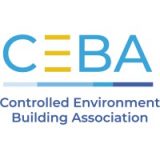Specifications for Polished Concrete
Specifications for Polished Concrete | Joint, Expansion, Edge & Crack Reconstruction Fillers & Products
Specifications for polished concrete including those for industrial and retail floors | understanding expansion joint fillers as well as concrete repair products for reconstruction, crack, and edge repair
Polished concrete specifications for both new floor installations and floor remodel or rejuvenation projects can often be ambiguous, confusing, and even contradictory. Understanding both the products and the processes required to yield the desired results is critical to both the specifier and the concrete polishing contractor if the finished product is to meet the facility owner’s needs. Whether specifications are prescriptive or performance driven, all too often they are missing key components in properly addressing joint edge protection, crack repair, surface variations, etc. Specifying appropriate floor joint fillers and concrete repair products is critical in delivering a polished concrete floor product that delivers on both aesthetics and performance goals. At Metzger/McGuire, we’re here to help all the players reach their goals.
If you need assistance preparing your bid packet, or need additional information pertaining to joint and expansion fillers, edge and crack repair or reconstruction products, processes, or services for your upcoming project please reach out to a Metzger\McGuire polished concrete specialist for their assistance today.
Our industry leading products and services are protecting millions of square feet of concrete in facilities owned by the world’s largest brands like Amazon, Walmart, Target, Costco, Ford Motor and many, many more. Many of these industry leaders are utilizing the most advanced supply chain and distribution technology available, and many of these technologies require concrete floors of the finest quality and finished tolerances. Metzger/McGuire has partnered with industry leading firms for more than 50 years in this pursuit of supply chain perfection. And we are happy to partner with you in your pursuit of the highest quality polished concrete floors too.
Polished concrete is now the go to flooring system in facilities that traditionally would have relied on standard hard trowel finished floors. Some of the polished concrete floor applications we enhance and protect with our industry leading epoxy and polyurea products including joint fillers, reconstruction and surface products like structural epoxy mortars, under-slab stabilizers, pit grouts and chemical densifiers include:
- Warehouse Floors
- Robotic Warehouse Floors
- Distribution Center Floors
- Robotic Distribution Center Floors
- Pharmaceutical Manufacturing Facility Floors
- Electrostatic Manufacturing Floors
- Data Center Floors
- Big Box Retail Floors
- Fresh and Frozen Food Warehouses and Distribution Center Floors
- Retail Grocery Floors
- Manufacturing Floors
- Restaurant Floors
- Boutique Retail Floors
- College and University Floors
- Municipal Building Floors
- Airport and Transportation Facility Floors
- Light Commercial Building Floors
- High End Residential Floors
- Office or Multi-Tenant Building Floors
More Information on Specifications for Polished Concrete Floors
When putting together polished concrete specifications for the bidding process on any commercial or residential installation project, it’s important to understand that several key components are often left off the specification criteria or get buried in other more ambiguous code categories. Or worse, they are not included at all. Make sure you don’t get caught ignoring these critical components. Whether you are an architectural firm, designer, engineer, or general contractor, put the odds of a successful bid process in your favor by being exceedingly thorough in the bid specification creation or submission phases.
Although it can be said that the specification of polished concrete floor products within the polished concrete floor bid process, especially the enhancers, is somewhat still “The Wild West,” that is now beginning to change as standardized measurement tools are developed and gain widespread acceptance in the industry. The American Concrete Institute’s (ACI) Decorative Concrete Committee 310 recently completed ACI 310.1-20 Specification for Polished Concrete Finishes and the document is expected to be published in late 2020. This document, produced in a joint committee with the American Society of Concrete Contractor’s (ASCC) Concrete Polishing Council (CPC) will finally provide a framework for a more robust and comprehensive set of criteria to define a great many more product categories and sub-categories to build a high quality polished concrete specification. In turn, the production of polished concrete floors will become more comprehensive and more standardized. Better specifications lead to better performing polished concrete floors. Until this specifications is published and widely understood and ultilzed, it’s in your best interest to understand where the current pitfalls are with regards to polished concrete floor specifications. As more and more applications call for polished concrete floors-from high end residential builds to retail floor design to large scale robotic warehouses in need of a highly refined finish for performance-the need to refine specifications and provide for a higher level of finish becomes critical. Getting it wrong, or failing to provide performance-based expectations for tested property such as gloss (SOGV) or clarity (DOI) can be catastrophic. Avoiding this scenario and mitigating any post project completion risk in terms of brand equity and financial obligation can be addressed by understanding a few small specification clarifications.
When it comes to polished concrete floors and their specifications, much of the focus is on the concrete itself and the grinding processes used to obtain a desired level of finish. This is true of course for stained, dyed, or natural polish floors. Standards sometimes address the group of “enhancers” needed to perform the task at hand, but in many cases, and more often than not, they don’t. Listed below are the CSI MasterFormat specification numbers pertaining to polished concrete floors that are currently most frequently used.
03 35 43 Polished Concrete Finishing
03 35 43.13 Polished and Dyed Concrete Finishing
03 35 43.16 Polished and Stained Concrete Finishing
When it comes to joint fillers, densifiers, and pit grouts, the following CSI numbers are available, but often not used.
03 01 30 Maintenance of Cast-in-Place Concrete
03 01 30.71 Rehabilitation of Cast-in-Place Concrete
07 91 26 Joint Fillers
07 92 16 Rigid Joint Sealants
Further, the CSI codes for the repair and maintenance of polished concrete floors, albeit somewhat ambiguous, are;
03 01 30 Maintenance of Cast-in-Place Concrete
03 01 30.71 Rehabilitation of Cast-in-Place Concrete
When it comes to the enhancing products to be applied during the grinding and honing phases of the finishing process, in most cases they are not directly specified, but generally mentioned. In the absence of a more detailed specification process such as the one soon to be published by ACI 310, a more comprehensive process for specification would include at the very least using the codes for joint sealants and fillers noted above, and further specific notations as to the products and processes required. Not all joint sealants, densifiers and pit grouts are created equal, so noting a stalwart manufacturer like Metzger/McGuire and their products is a first great step to ensuring the finished product is as reliable as possible.
Just exactly how important are joint sealants, densifiers, and pit grouts to the finished product? As important as the grinding and polishing processes themselves.
In the production of polished concrete flooring, the addition of enhancers should be considered just as critical as the grinding and honing process during specification. Understanding the importance of these enhancers during the bid specification creation or bid process can be extremely beneficial to the end product.
Joint Fillers or Sealants
Joint fillers or sealants in polished concrete floors are specified for a variety of critical challenges.
First, they provide a better aesthetic appearance, and with Metzger/McGuire’s wide range of color options, it’s easy to find a color specifically designed to match to a large variety of stain and dye systems in the marketplace.
There are several functional benefits to using joint fillers prior to the grinding and honing process. Having joints filled during the honing process also greatly reduces the chances a diamond tool will catch an edge and damage it, potentially requiring further costly floor repair and ongoing maintenance.
Joint fillers also provide ongoing protection for edge deterioration from wear or damage from external forces, such as edge impact.
Finally, when it comes to floor hygiene, it’s critical to consider the housekeeping and sanitization of your finished polished concrete floor. When you fill a joint with properly specified joint filler, you are mitigating any long-term hygiene issues that may arise as time goes on. Unfilled joints or improperly filled joints become a cleaning challenge, making the process of cleaning debris, dirt, and worse, nearly impossible from the finished floor joints. When left unchecked, even harmful bacteria can be left to propagate, leading to even bigger challenges. When it comes to joint filler, an ounce of prevention is truly worth a pound of cure.
Metzger\McGuire Joint Filler Products Applicable to Polished Concrete Floor Finishing
Spal-Pro RS 65
RS 88
Edge-Pro 80
Chemical Densifiers
These products chemically react with the free lime in the concrete to close off pores that are opened during the grinding process and yield a tighter and more resilient surface matrix. Densifiers are used for the finest of pores and are not applicable for larger “pitting” or sand rollout.
Metzger\McGuire can recommend products in this category
Pit Grouts
Pit Grouts are used to fill in tiny pores, sand roll out, etc. that can be created during the grinding process. These are surface defects that chemical densifiers are not formulated to resolve. This would essentially be considered an enhancement during the process and is done during the grinding (or honing) steps. If a floor is not “fine grouted” during this process, the finished result, no matter how high in grit the floor is ground to, will be compromised as the overall gloss and clarity of the finished floor will be reduced due to any surface pits or holes left in the surface.
The main measurements for polished concrete are gloss (SOGV) and clarity (distinctness of image or DOI). Both are measured using a device that bounces light off the floor at an angle to a second lens, which in turn determines how much of the light is lost in that bounce. If there are any pits or defects in the surface – no matter how small – that reading will be reduced. Grouting products should be specified in the actual polishing process as due course to maintain the integrity of the finished floor.
Metzger\McGuire Pit Grout and Surface Fillers Applicable to Polished Concrete Floor Finishing
Repair, Maintenance, Reconstruction & Refurbishment of Polished Concrete Floors Including Repair in New Floor Finishes Due to Defects and Poor Workmanship
When it comes to the repair and maintenance of polished concrete floors, there are a couple of specification codes used to encompass the process and products involved within the process. Repairs and reconstruction may be necessary on both old and new floors.
Quality and qualifications vary widely when it comes to concrete placement and finishing and often the “canvas” of a new floor contains defects such as cracks, embedded foreign objects like pallet remnants and cigarette butts, as well as a variety of other defects. These defects often require the rebuilding of edges, filling of major gaps and more. Old floors often have remnants of these original construction defects, and will also additionally harbor wear and tear issues such as broken and worn edges, deep flat surface gouging, spalling and more. Products to repair these defects vary greatly and understanding which product is necessary to properly address any issue is paramount to the successful repair and reconstruction of any polished concrete floor.
Metzger/McGuire is the industry leader in not only industrial joint fillers, but reconstruction or repair products as well. Products in our line that can be used for these floor defects include our industry leading low viscosity structural polyurea products.
Rapid Refloor
Rapid Refloor XP
SRG
Navigating the ambiguous construction, repair, and maintenance specifications for polished concrete floors can be complex and confusing, but it doesn’t have to be! Call or email Metzger/McGuire today and let our knowledgeable technical staff assist you in writing your bid specification or help you in preparing your bid response to the same.
Here are a couple of samples for polished concrete floor bid packets outlining a comprehensive approach to the specification process for both a new polished concrete floor design and installation as well as a refurbishment and remodel of an old polished concrete floor to assist in your bid packet creation or response
Metzger\McGuire looks forward to helping you navigate the polished concrete floor specification process! Call 1-800-223-6680 today and let a specialist lend a hand.






